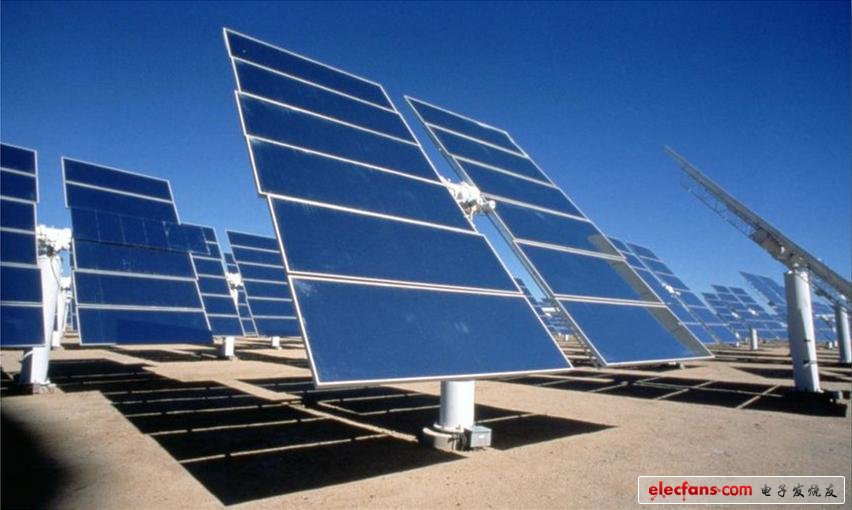Solar energy refers to the radiant energy of sunlight. The use of solar energy has two methods: passive utilization (photothermal conversion) and photoelectric conversion. Solar power is an emerging form of renewable energy use. Solar energy in a broad sense is a source of many energy on Earth, such as wind energy, chemical energy, and potential energy of water.

The main methods of using solar energy are:
* Use solar cells to convert the energy contained in sunlight into electrical energy through photoelectric conversion
* Use solar water heaters to heat the water with the heat of sunlight
* Use the heat of sunlight to heat water and use hot water to generate electricity
* Use solar energy for desalination
The principle of solar energy is very complicated, and semiconductors can generally be used for photoelectric conversion. And now the conversion efficiency is getting higher and higher.
Nowadays, the use of solar energy is still not very popular. The use of solar power also has the problems of high cost and low conversion efficiency, but solar cells have been applied to provide energy for artificial satellites.
At present, the world's largest rooftop solar panel system is located in Buerstadt, southern Germany, with an area of ​​40,000 square meters and an annual generating capacity of 4.5 million kilowatts.
The system for generating electricity using the solar energy principle consists of a solar battery pack, a solar controller, and a battery (group). If the output power is AC 220V or 110V, you need to configure the inverter. The role of each part is:
(1) Solar panels: Solar panels are the core of solar power systems and the most valuable part of solar power systems. Its role is to convert the solar radiation capacity into electrical energy, or send it to the battery for storage, or to drive the load. The quality and cost of solar panels will directly determine the quality and cost of the entire system;
(2) Solar controller: The function of the solar controller is to control the working state of the whole system and to protect the battery from over-charge protection and over-discharge protection. In places with large temperature differences, qualified controllers should also have temperature compensation. Other additional functions such as light control switches and time control switches should be optional for the controller;
(3) Battery: Generally, it is a lead-acid battery. In a small and micro system, a nickel-hydrogen battery, a nickel-cadmium battery or a lithium battery can also be used. Its function is to store the electrical energy emitted by the solar panel when there is light, and then release it when needed.
(4) Inverter: In many occasions, 220VAC and 110VAC AC power supply are required. Since the direct output of solar energy is generally 12VDC, 24VDC, 48VDC. In order to supply electrical energy to 220 VAC appliances, it is necessary to convert the DC power generated by the solar power generation system into AC power, so a DC-AC inverter is required. In some cases, when a load of multiple voltages is required, a DC-DC inverter is also used, such as converting 24 VDC into 5 VDC (note that it is not a simple step-down)
The principle of solar energy can be divided into two types:
Solar photovoltaic
A photovoltaic panel assembly is a power generating device that produces direct current when exposed to sunlight, consisting of a thin, solid photovoltaic cell made almost entirely of semiconductor material, such as silicon. Since there is no active part, it can be operated for a long time without causing any loss. Simple photovoltaic cells provide energy for watches and computers, and more complex photovoltaic systems can illuminate the home and power the grid. The photovoltaic panel assembly can be made in different shapes, and the components can be connected to generate more power. In recent years, photovoltaic panels have been used on rooftops and building surfaces, and even as part of windows, skylights or shelters, which are often referred to as photovoltaic systems attached to buildings.
2. Solar thermal energy
Modern solar thermal technology polymerizes sunlight and uses its energy to produce hot water, steam and electricity. In addition to using appropriate technology to collect solar energy, buildings can also use the sun's light and heat by adding suitable equipment to the design, such as giant south-facing windows or building materials that absorb and slowly release solar heat. .
Deposit Safe is a secure and protective cash storage container, which is widely used in stores and shops.
Details:
There is an opening for coins;
Deposit safe is anti-drilling, anti-burglar and anti-force;
Mechanical Lock + key, double protection is included;
Customization of design and sizes are available;
When the door is locked, money can only be put in but cannot be taken out unless with correct codes;
There is an emergency key for emergency situations .
Deposit Safe
High Security Burlary Safe Box,Safe Electronic Safe,Safe Deposit Lockers
YONGFA INTELLIGENT TECHNOLOGY SECURITY CO., LTD. , http://www.yongfa-safe.com